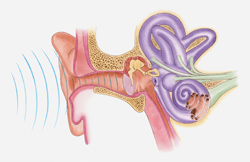How do we process novel stimuli?
Hearing a sound for the first time triggers a cascade of events different from the processing of non-novel sounds. The sound or novelty signal is detected in the part of the brain known as the auditory cortex and leads to novelty-related electrophysiological responses and expression of immediate early genes (IEGs). These events culminate in synaptic plasticity, a term used by neuroscientists to indicate changes in the strength of a transmission signal between two neurons. However, the precise mechanisms that link these processes together remain poorly understood. The main aim of the EU-funded ‘Novelty tuning: behavioural, electrophysiological and molecular mechanisms of novelty detection’ (Noveltune) project was to study specific aspects of the processing of novel stimuli. More precisely, project partners wanted to understand how electrophysiological responses are implicated in the response to a novel stimulus alongside induction of IEGs, modulation of neurotransmitters and long-term synaptic changes. This was achieved by pre-exposing animals to a tone sound and then training them with the same sound (non-novel stimulus) or a new sound (novel stimulus). To investigate how neuromodulatory signalling affects the processing of novel sounds, scientists blocked the neurotransmitter serotonin and observed an altered response of the auditory neurons to the tone presentation. The Noveltune consortium extended these observations to other sensory systems by studying the behaviour abnormalities of patients with schizophrenia who are known to have abnormal sensory gating of novel stimuli. Overall, the Noveltune project provided new insight into the complex interplay of biological processes involved in the detection of novel sensory stimuli and how they translate to a specific behaviour. Delineating these mechanisms will have significant implications for understanding diseases like schizophrenia and developing future therapies.







